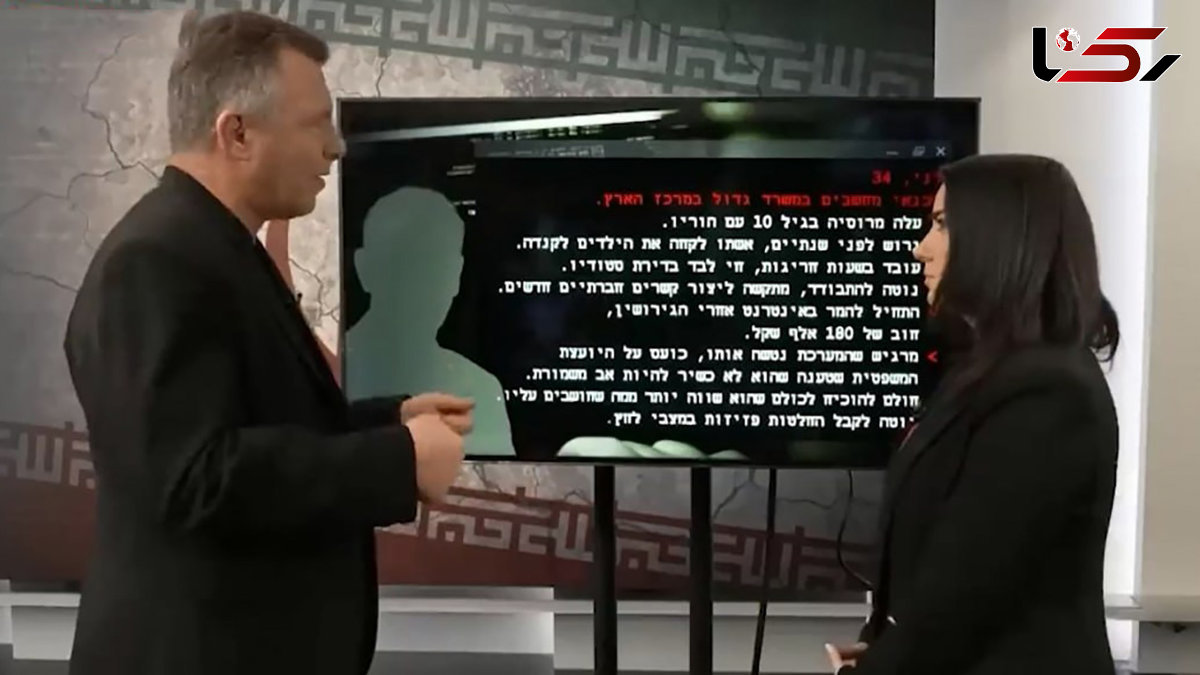Iranian Intelligence Penetration in Israeli Security Networks: 30 Controversial Spy Cases + Video
Rokna Political Desk: A Zionist television network, in a video report examining the hidden dimensions of over 30 espionage cases involving residents of the occupied territories working for Iranian intelligence agencies, has detailed Iran’s power and intelligence presence at the heart of the occupied territories.

According to Rokna, the sharp increase in the number of espionage cases involving residents of the occupied territories for Iranian security agencies has recently triggered serious concerns within Israeli security and media circles.
In just the past few weeks, nearly 50 Zionist settlers have been arrested on charges of espionage and collaboration with Israel’s greatest adversary, Iran. These individuals, under 30 separate espionage cases, were detained and interrogated by Israeli security and intelligence agencies, including the Israel Security Agency (Shabak) and the International Crimes Unit of the Israeli Police, known as the “Lahav 433” Unit.
The significance of the intelligence reportedly sent to Iranian security agencies has been so sensitive that Israel’s judiciary has resolved to impose the death penalty on some of these defendants.
In this regard, Israel’s “Kan 11” television network recently released a video report examining the alarming scope of Iranian intelligence infiltration deep within the occupied territories. The report sought to illustrate the methods by which Iranian intelligence officers recruit Israeli spies and to issue warnings regarding the fate of residents collaborating with Israel’s principal enemy.
The report begins by referencing the important espionage case of Moti Maman, a Zionist settler with secret trips to Tehran. Investigator Maor Goren, responsible for interrogating Maman, described his recruitment and employment by Iranian intelligence agencies as resembling a “Hollywood movie,” without providing detailed specifics.
The Controversial Case of Seven Azerbaijani-Origin Spies
Goren, working in the “Iran Desk” of the Israeli Police, continued by detailing the controversial case of seven Azerbaijani-origin settlers who, over two years, managed to provide valuable intelligence from sensitive and strategic locations within the occupied territories to Iranian intelligence without being detected by Israeli agencies.
These individuals were tasked with daily trips to various parts of the occupied territories, following security protocols recommended by Iranian intelligence officers, to identify and code the exact locations of sensitive sites such as military bases, air defense systems, and military airports, transmitting this information to Iranian agencies.
How a Young Couple in Their 30s Was Recruited by Iranian Intelligence
Goren also revealed, for the first time as an Israeli security official, that the significant strikes on Israel’s Nevatim Airbase by Iranian missiles were enabled by critical intelligence provided by this seven-member group.
Among the numerous espionage cases for Iran, the case of Rafael and Leila Gulyayo, a 30-year-old Zionist couple residing in Lod, holds particular importance.
According to Guy Aranberg, their lawyer, the couple appeared entirely ordinary, and few suspected their recruitment by Iranian intelligence. With four years of continuous espionage, Rafael and Leila Gulyayo set a record among recently arrested Israeli spies.
Aranberg explained the recruitment process: Iranian intelligence officers initially offered Rafael a substantial sum for a high-risk mission, which he declined. However, due to financial difficulties, he later requested a new assignment.
The couple subsequently rented an apartment in central Tel Aviv overlooking the security zone of Hacriah, installing a 24-hour online camera to transmit intelligence regarding the Be’er Yaakov power plant to an Iranian officer. They also photographed funeral ceremonies of Zionists killed during Operation Al-Aqsa Storm and, later, carried out surveillance on Mossad buildings. They were ultimately arrested with all espionage equipment by the Israeli International and Criminal Investigations Unit.
This couple is among the few settlers sentenced to death by Israeli courts for collaborating with the intelligence services of a hostile nation—namely, Iran.
Israeli Spies Ranging from 13 to 74 Years Old
The report by Kan 11 acknowledges that many Jews, Arab-origin, Azerbaijani-origin individuals, secular and Haredi residents, as well as male and female Israeli army officers, all residing within 1948 territories, were recruited by Iranian intelligence.
Court documents indicate that espionage defendants ranged in age from 13 to 74, highlighting significant concern within Israeli security circles.
The report identifies social and economic disparities as the primary motivators for cooperation with Iran. Moshe Fozilov, a former senior Shabak officer, notes that Israeli society has become vulnerable due to social divides and economic crises, forcing disadvantaged groups to accept espionage missions.
Adi Karami, another former senior Shabak official, emphasized the role of cyberspace, explaining that Iran’s ability to recruit Israelis via social networks and cyber power, without fear of detection, is alarming.
The report details several key espionage cases in which Iranian intelligence obtained sensitive information from Ben Gurion Airport, the northern Zipline airbase, and other strategic sites. Investigator Maor Goren notes that installing cameras and gathering intelligence from the residences of the Chief of Staff, the Defense Minister, and identifying the exact location of Naftali Bennett in a hospital are among the most critical espionage operations.
The latter part of the report explores the personal lives and motivations behind suspected Israeli spies recruited by Iran. Under Israeli law, the maximum penalty for aiding an enemy country during wartime is death; among dozens of indictments, only three cases, including the Gulyayo couple, face this punishment.
For Iranian audiences, this report is particularly significant, as it demonstrates how, amid an escalating military and intelligence confrontation between Iran and Israel, Iranian officers, employing various methods and tactics, infiltrate the occupied territories and identify vulnerabilities within strategic locations of the Israeli regime.
Send Comments